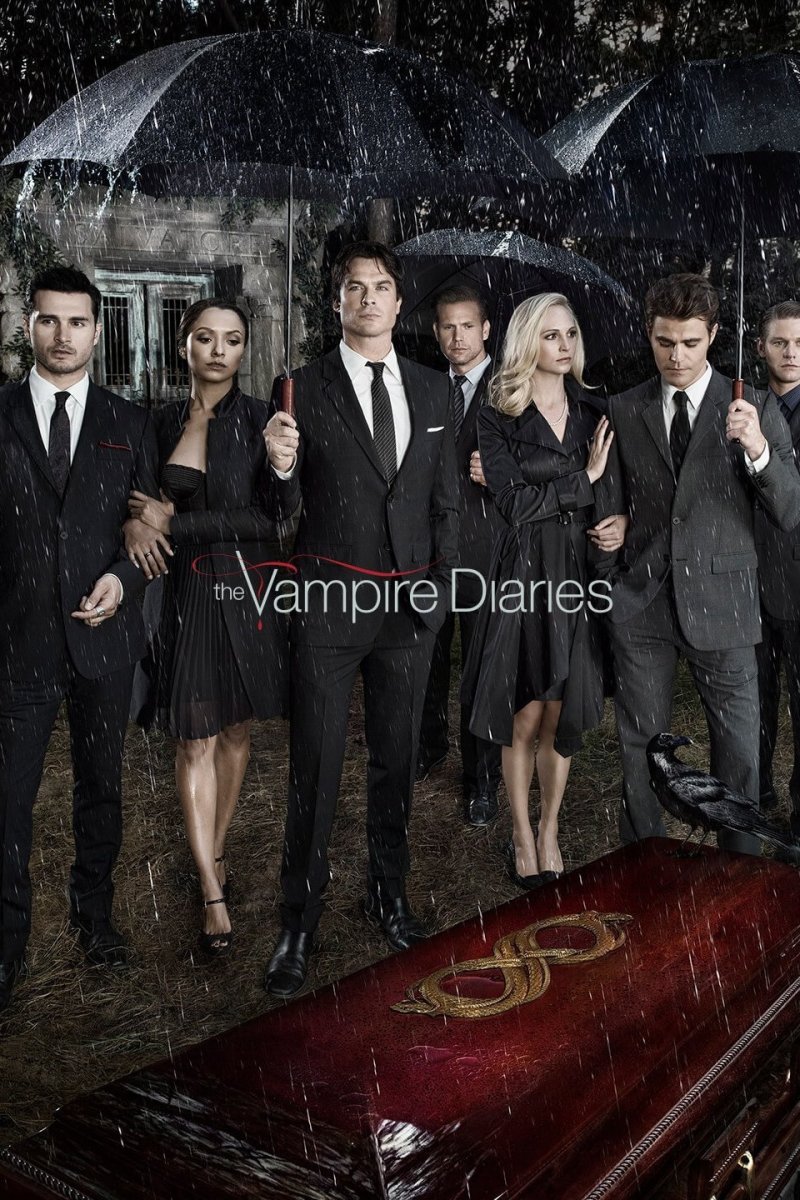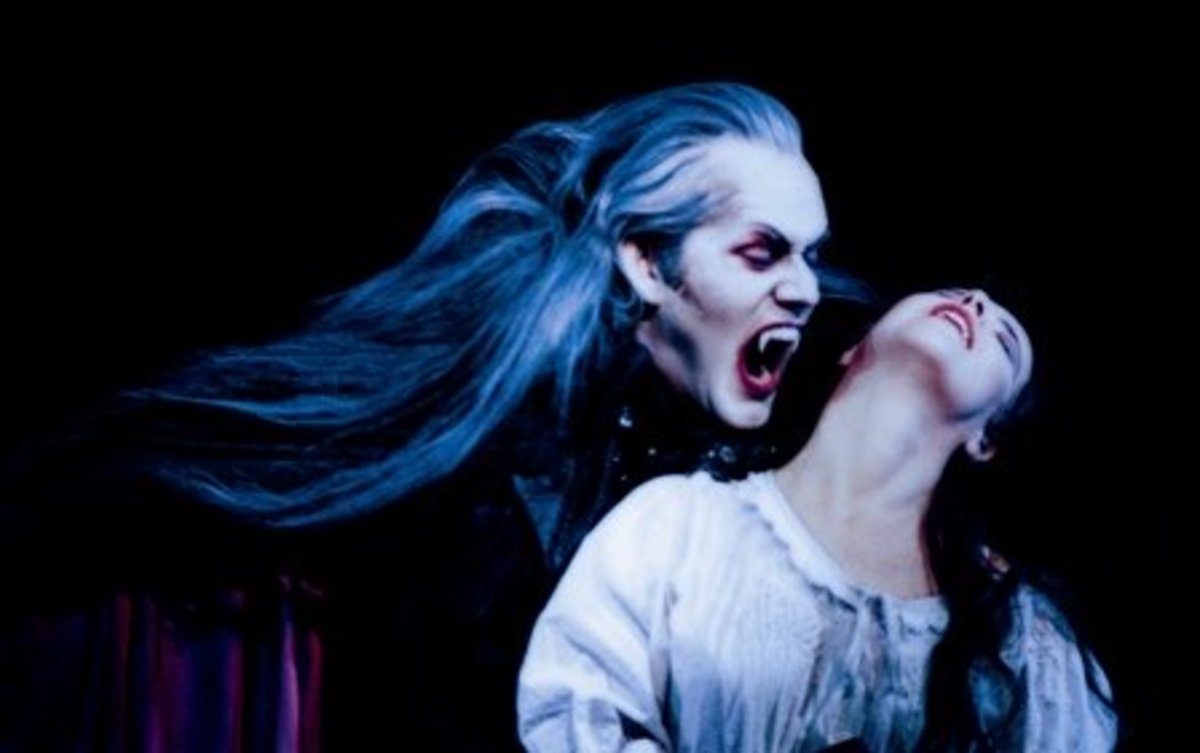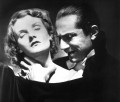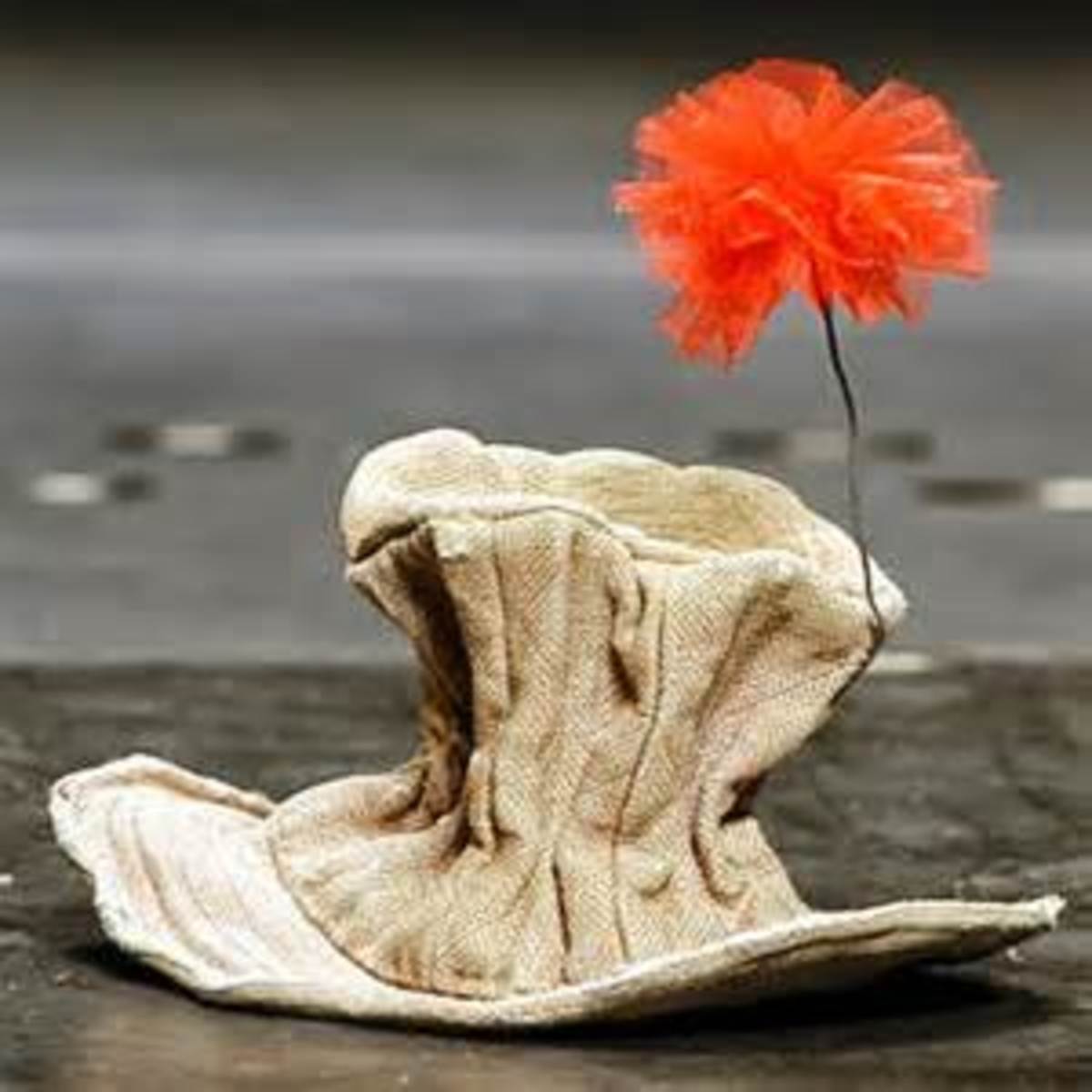The Vampire - Notes on Marschner's Operatic Classic

Blood Sucking Background:
Question: What’s the difference between a vampire and a lawyer? Vampires only suck blood at night.
Here’s another: Why did the vampire’s lunch give him heartburn? It was a stake sandwich.
Okay, one more: Did you hear about the vampire artist? He really knew how to draw blood.
You may be laughing because you got the jokes. You may also not be laughing because you got the jokes.
Regardless, the point is that when it comes to vampires it’s difficult to be esoteric. We all know about Dracula, about sunlight and crosses and three bites on the neck of young virgins. One might say vampires are part of our culture’s mental furniture; they provide a familiar symbol for darkness, evil and seduction. No matter how sober or comic our depiction of vampires, they testify to some of the signature realities of a confounding worldview; that the world’s most sinister fiends thrive on human suffering; that in a fallen world, terrible things happen to the best people.
Dracula's Doctor - The Work of John Polidori
Doctor cum author cum penny dreadful romantic John Polidori adapted a discarded idea of Lord Byron into the story, The Vampire. It received a lukewarm reception by the era’s literary intelligentsia. Naturally, it was adored by the public. Polidori’s story gained such popularity that it was further adapted into play and finally opera. The origins of contemporary interpretations of vampires may be traced directly to these light entertainments; the gentlemen fiend who woos then eats his victims; unnatural and terrible powers; the pale allure of “children of the night.” These motifs appear in every expression of Polidori’s story and continue to populate modern representations of vampires. Also found in Marschner’s piece is the clear battle between good and evil and the symbolic relationship between vampires and Christian understandings of sin. These ideas often prove less clear, if not absent, in contemporary portrayals of vampires. But they comprise questions regarding faith and spiritual warfare.
Foremost among these questions is the notion of vampire as spiritual parasite. The vampire survives through parity; others die so that it can live. On the surface, this point seems benign. Recall, however, that the more evil the vampire, the more pure his prey. In the world of vampires, evil relies upon good, not vice versa. In Mere Christianity, apologist C.S. Lewis says, “…even to be bad [one] must borrow or steal from [good]. [This is] why Christianity has always said that the devil is a fallen angel. That is not a mere story for the children. It is a real recognition of the fact that evil is a parasite, not an original thing.” Based on Lewis’s observation, we find a similar phenomenon in stories about vampires. They serve as literal and metaphorical examples of an evil that must drain goodness for survival. The same holds true of our transgressions. Lust, pride, vanity—each so often begins with nobler sentiments of self-awareness, self-control, even love. Only later, do they pervert and corrode our lives.
It is perhaps no accident, then, that vampires so often attempt to turn God’s world “topsy turvey,” a hideous fracture of nature. Black Sabbaths, aversion to crosses and a resemblance to less savory beasts like snakes, bats and even black cats signify a deliberate disjunction with God’s creation. The most prevalent example of this separation comes from the vampire’s twisted conception of immortality. Eternal life for vampires at once means everlasting thirst and damnation. But God offers a life filled with grace; the weak find rest and the sinful receive pardon—the opposite of eternal judgment. The differences between these rival immortalities may explain why vampires are often harmed by the sun. To denounce God is to only dwell “outside the light.”
If these observations hold true for vampires then, what, one may ask, continues to make them so enticing? Like sin itself, the vampire never reveals its shortcomings. The power of temptation lies in its capacity to hide its “fine print.” This may be the reason why our most durable portrayals of vampires are often seductive predators. Their eyes, their voice and their smile all hide a harmful reality. It is little wonder that Marschner’s opera emerges at a period in history when Goethe’s Faust was being well received by theater audiences; in many respects the vampire’s embrace signifies a “deal with the devil.” Promises of immediate gratification so often come with a heavy and hidden cost.
But like sin, vampires can always be repelled via God’s sovereignty and pure human affection. Nevertheless, like so many legends and stories, these fiends symbolize a real, though less tangible threat. We may laugh or shiver at vampires, but also recognize the danger they represent to our physical and no less spiritual well being.
The Vampire by John Polidori
Bite Marks: History and Hysteria of Vampires:
Vampires have become a nigh ubiquitous part of our popular culture. Below are just a few fact about these fictional fiends.
- Early descriptions of vampires vary from culture to culture. Transylvanian vampires were seen as dark, tall and thin. Brazilian revenants, on the other hand, were squat, fat with blood and walked on furry feet. Albanian vampires wore high heeled shoes on their feet while on the hunt. Moravian vampires apparently wore no clothing at all.
- “Recipes” for creating vampires exhibit equal diversity. Few cultures prescribed to the “three bites and you’re out” legend. Instead, many societies attributed the restless dead to miasma; that corpses rose from the grave if their bodies were ill treated or improperly buried. For example, in Slavic villages, mortal wounds that went uncleansed from boiling water were certain to outbreak vampirism. Chinese folk forbade dogs, cats and other animals from walking over graves for fear their bestial steps would provoke a rising of the dead. All manner of objects could be placed alongside a corpse to insure its unbroken slumber, including wax crosses, coins, scythes and wheat grains.
- Like witches, vampires were often blamed for plagues and famines. Only twenty-five years prior to the publication of Polidori’s novel, individuals had been tried for vampirism after outbreaks of pestilence in several Eastern European hamlets.
- Tales of blood drinking fiends may be found in a number of early civilizations, some pre-dating the oldest biblical records. Such creatures were typically portrayed as fanged demons who survived on the blood ad bodies of their living victims.
- Contemporary depictions of vampires derive from their popular surge during the Victoria era. Such texts as Dracula and Varney the Vampire continue to influence society’s perceptions of this fictional figure. The era’s prevailing social proprieties and criteria for beauty may also explain why so many “vamps” exhibit a “beautiful pallor” and often rely on seduction to arrest their prey.
- Many wards against vampires required religious icons. The most prominent being the cross ad holy water. Stakes, however, were originally fashioned from hawthorn, a type of tree that often marked the sites of holy wells. Likewise, garlic only became a protection against evil spirits because of its abundance in comparison to mustard seed, a more biblical herb.
- Urban legends of vampires persist, the two most recent being the National Enquirer’s “Bat Boy” pictures and the longstanding Mexican story of the chupacabra (“goat sucker”).
Marschner - Overture: Der Vampyr
The Children of the Night! What Sweet Music They Make!
Know any other online resources for studying Gothic opera? I look forward to your comments and thank you in advance for any kind words. Check out my other Hub Pages for additional suggestions for navigating college assignments by working smart instead of merely working hard.








